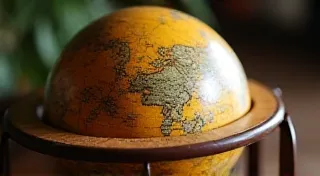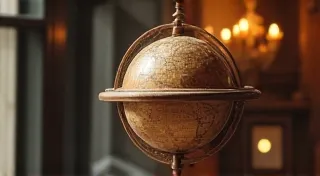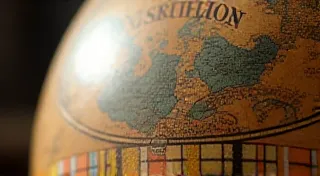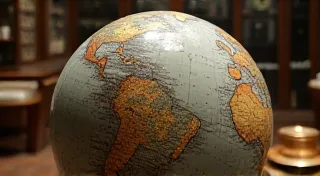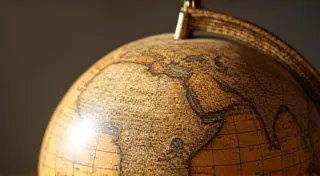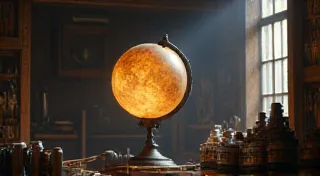Understanding Globe Cartouches: History and Restoration
Antique globes are mesmerizing objects, representing a fascinating intersection of art, science, and history. While the globe itself – the sphere depicting our world – is often the initial draw, a closer inspection reveals another crucial element: the cartouche. These decorative labels, often ornate and beautifully rendered, hold a wealth of information and add significantly to the globe's aesthetic value. This article explores the history and significance of globe cartouches and provides guidance on their careful restoration.
What is a Cartouche?
The term "cartouche" originates from the French word for tablet or box, likely borrowed from Italian "cartello." In the context of globes, a cartouche is a decorative label that typically contains the globe maker’s name, date of production, and sometimes other details about its creation. They can be found on the globe’s surface itself, often near the poles or along the equator, or on the base. They are integral to understanding the globe's provenance and historical context. Beyond just conveying information, cartouches were often designed to be visually striking, incorporating elaborate flourishes and intricate detailing. A globe’s overall condition, including the health of the paper, is influenced by factors that may also impact the cartouche. Understanding how to safely clean antique globe paper is critical for preservation.
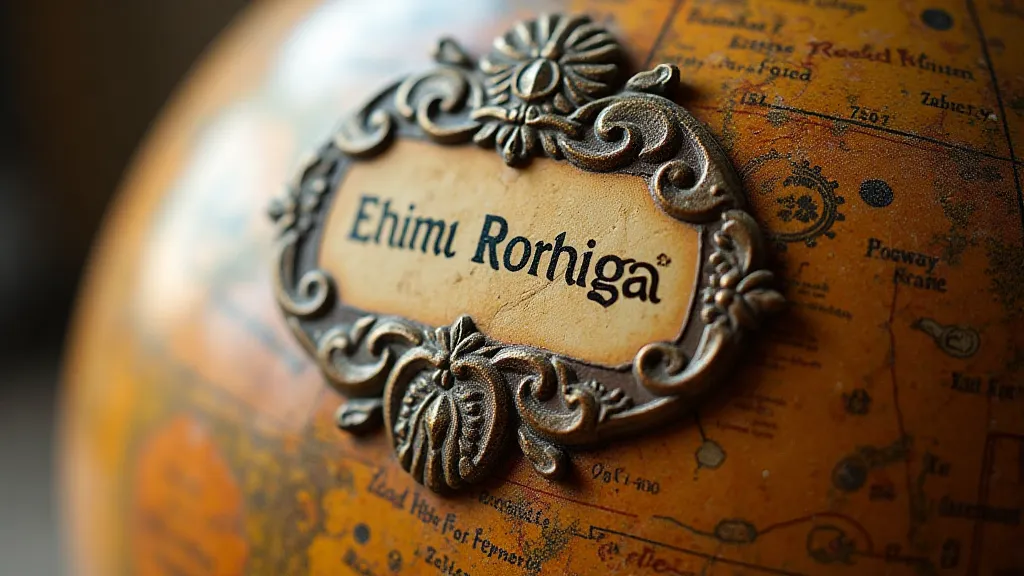
A Brief History of Globe Cartouches
The practice of adding cartouches to globes began to become prevalent during the 16th century, coinciding with significant advancements in cartography and globe making. Early cartouches were often relatively simple, but as globe-making techniques evolved, so did the complexity and artistry of the cartouches. The Golden Age of globe making (16th-18th centuries) saw the creation of truly magnificent examples. Cartouches often reflected the style prevalent in the era of their creation. For example, cartouches on globes made during the Baroque period would feature more flamboyant and ornate designs compared to those from the Neoclassical era, which leaned towards cleaner lines and classical motifs. The information conveyed within these decorative labels frequently referenced the globe's meridian bands, crucial components in the globe’s construction and appearance, further highlighting the globe’s design complexity.
The information contained within a cartouche is invaluable for dating and authenticating a globe. Early globes, particularly those made by renowned cartographers like Gerhard Mercator and Willem Blaeu, command significant value, and the cartouche serves as a key identifier. Furthermore, studying cartouches allows historians to trace the evolution of cartographic knowledge and understand how our understanding of the world changed over time. Often, inaccuracies and outdated information are visible even in later cartouches, providing fascinating insights into the limits of geographical knowledge at the time. Globemakers were reliant on available data, and these inconsistencies are often a valuable source of historical insight.
Challenges in Cartouche Restoration
Restoring a cartouche presents unique challenges. The inks and pigments used in antique globes were often organic and prone to fading, flaking, or discoloration. Years of handling, exposure to light, and changes in humidity can cause significant damage. Aggressive cleaning or restoration attempts can easily cause irreversible harm. The paper itself, a delicate medium, can become brittle and prone to tearing. The delicate nature of this paper demands specific knowledge, and sometimes even cleaning antique globe paper is best left to a professional.
The first step in any cartouche restoration is careful assessment. Determining the type of ink or pigment used is crucial for selecting the appropriate restoration techniques. Water-based inks are more susceptible to damage from water, while oil-based inks can be more resistant. The paper or parchment the cartouche is printed on is also fragile and requires gentle handling. The specific type of pigment used will also determine the cleaning agents, if any, that can be used to remove dirt and grime.
Often, the best approach is minimal intervention. Cleaning may involve gentle dusting with a soft brush or carefully removing surface dirt with a specialized cleaning solution designed for delicate paper. If sections of the cartouche are missing or significantly damaged, attempting to recreate them is a delicate and potentially risky endeavor, best left to experienced conservators. Color matching can be exceptionally difficult, and even the most skilled restorer can only hope to approximate the original appearance. Sometimes, even replicating the damage is a considered choice to preserve the overall aesthetic.
Best Practices for Preservation & Minimal Restoration
- Gentle Cleaning: Use a soft brush and dedicated conservation cleaning solutions.
- Avoid Water: Water can damage many older inks.
- Light Control: Protect globes from direct sunlight and UV exposure.
- Humidity Control: Maintain a stable humidity level.
- Documentation: Carefully document any restoration work undertaken.
- Professional Consultation: Consider seeking professional advice before undertaking any significant work.
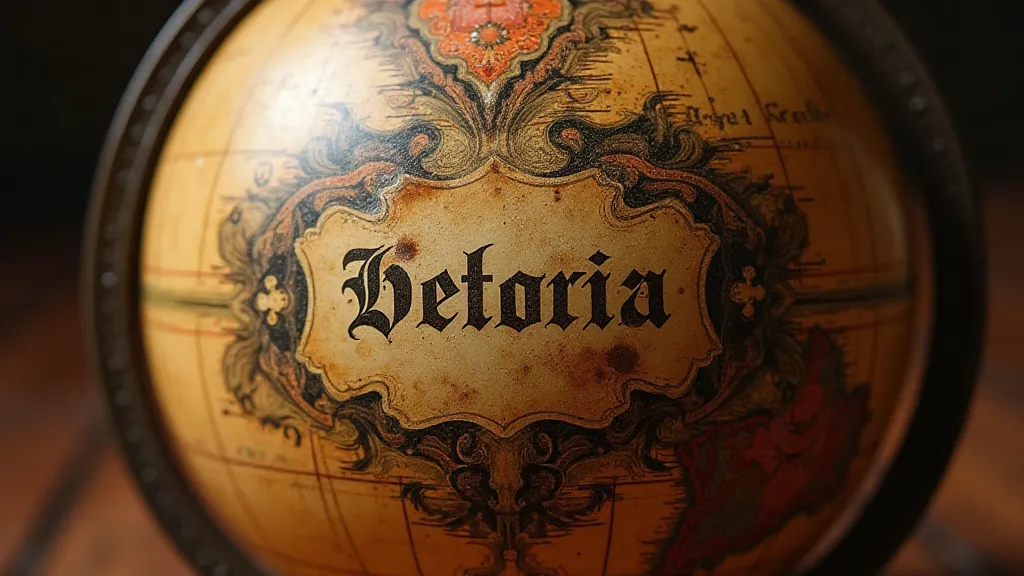
Recreating Lost Details: A Last Resort
When a cartouche suffers extensive damage, the prospect of recreating lost details can be tempting. However, this is a process fraught with peril. The skill of a conservator extends beyond mere artistic talent; it requires a deep understanding of historical pigments, paper types, and cartographic techniques. Even the most experienced conservator acknowledges that any recreation is, by necessity, an approximation. The aim is not to perfectly replicate the original but to create a cohesive and aesthetically pleasing whole that respects the globe's history. In some cases, the damage itself has become an intrinsic part of the globe’s narrative, and attempts to “correct” it might inadvertently diminish its historical significance. The decision to recreate lost details is one that demands careful consideration and a profound respect for the object's integrity.
The Ethics of Globe Restoration
The restoration of antique globes, especially their cartouches, raises important ethical considerations. While the desire to preserve these remarkable objects is commendable, it's crucial to avoid interventions that compromise their authenticity or diminish their historical value. The principle of minimal intervention should always guide the conservator’s approach. Any restoration work should be clearly documented, ensuring that future generations understand the extent of the interventions undertaken. Furthermore, there's a growing awareness that, in some cases, the passage of time and the marks of handling are integral to an object’s story. A pristine, artificially restored globe might lack the character and charm of one that bears the patina of age.
Seeking Professional Help
Due to the complexity and risks involved, it's often advisable to consult with a professional globe conservator for any significant cartouche restoration. They possess the knowledge, experience, and specialized tools necessary to assess the condition, recommend appropriate treatments, and execute restoration work with minimal risk to the globe's integrity. Occasionally, replacing missing globe paper sections is the only viable solution for severely damaged globes, and requires specialized expertise. Finding a conservator with experience in cartouche and globe restoration is essential for ensuring the object’s long-term preservation.
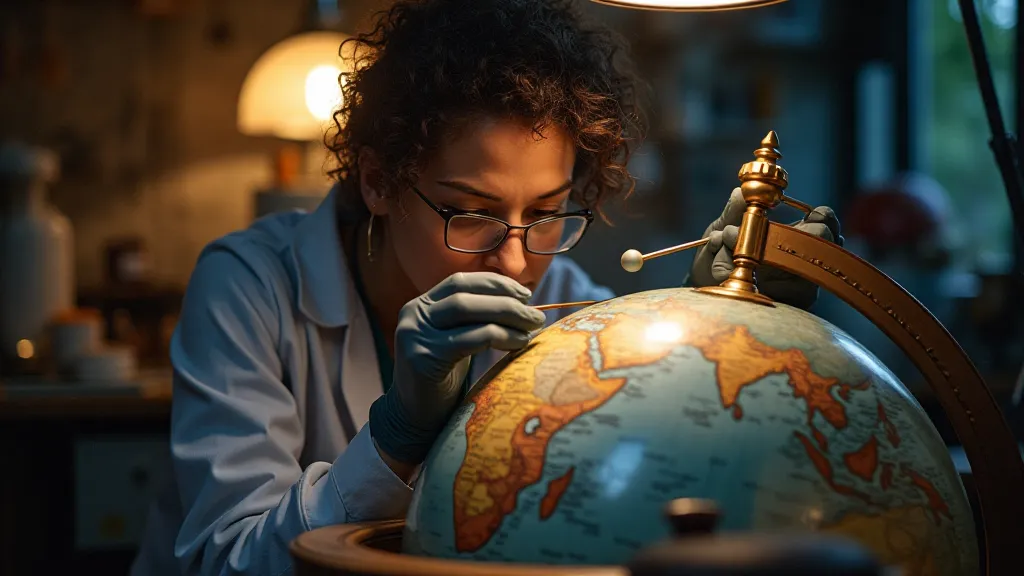
Preserving antique globes and their cartouches is a commitment to safeguarding a vital piece of history. By understanding their significance and approaching restoration with care and expertise, we can ensure that these remarkable objects continue to inspire and educate for generations to come.
